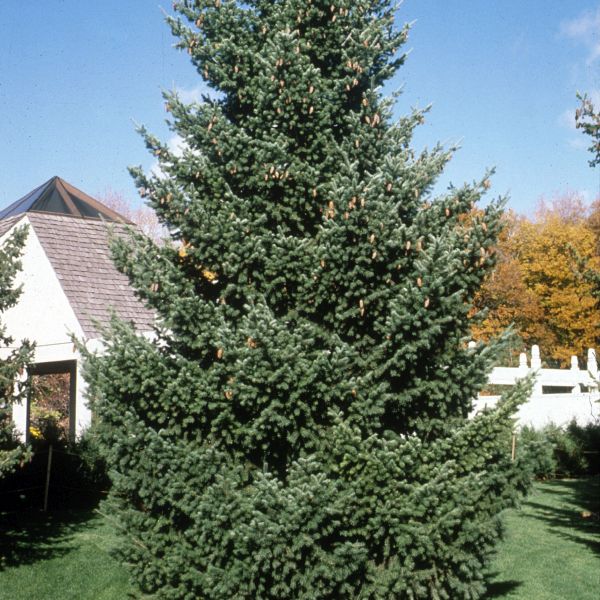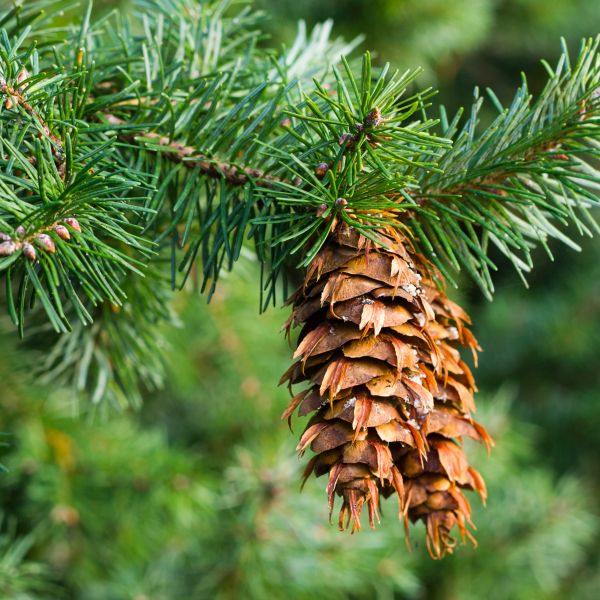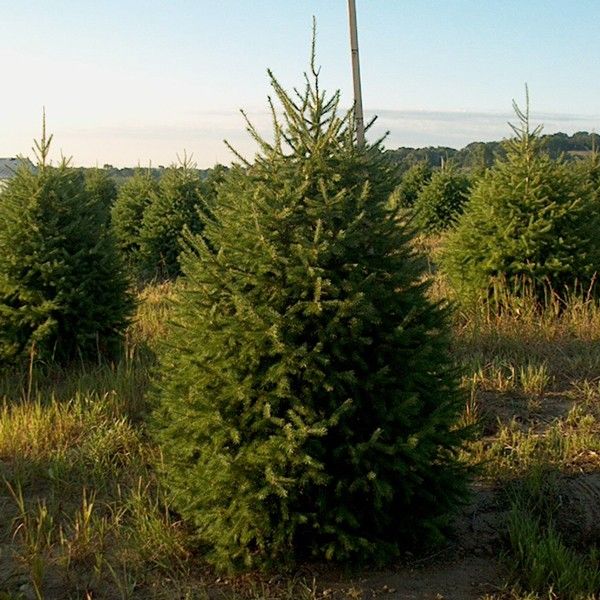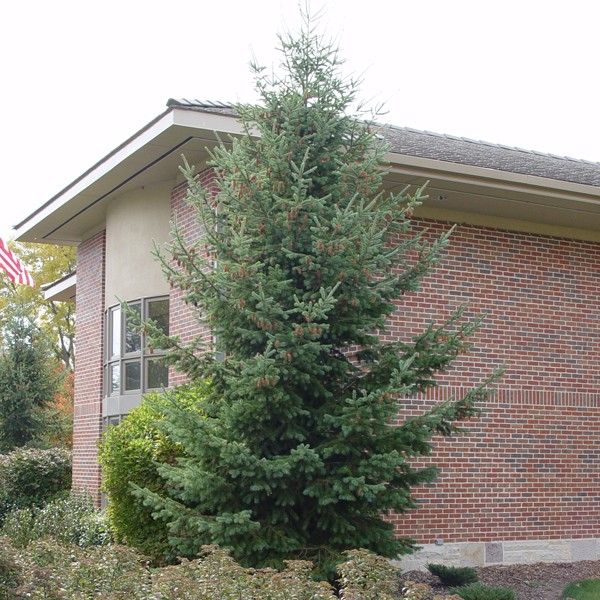Douglas Fir Tree
Pseudotsuga menziesii
- Stay Protected with Plant Sentry ™
Douglas Fir Tree - #2 Container is backordered and will ship as soon as it is back in stock.
Plant Sentry™
Plant Sentry™

Plant Sentry™ Protected
Your order is protected by our compliance system that:
- Prevents restricted plants from shipping to your state
- Ensures plants meet your state's agricultural requirements
- Protects gardens from invasive pests and diseases
Delivery and Shipping
Delivery and Shipping
Delivery and Shipping
Fast, Safe Plant Delivery
Ships in 3-4 business days • Tracking provided • Weather protected
| Under $50 | $9.99 |
| $50 - $99.99 | $14.99 |
| $100 - $149.99 | $16.99 |
| $150 - $198.99 | $24.99 |
| $199+ | FREE |
✓ Zone-specific timing • ✓ Professional packaging • ✓ Health guarantee
Understanding Plant Options
Nature Hills offers plants in two main formats:
- Container Plants: Grown in pots with soil, sized by container volume and plant age
- Bare Root Plants: Dormant plants without soil, sized by height measurements
Container Plant Sizes
Container sizes indicate plant age and growing capacity rather than liquid volume equivalents. Our containers follow industry-standard nursery "trade gallon" specifications, which differ from standard liquid gallon measurements.
Young Plants (6 months to 18 months old)
| Container Size | Actual Volume | Metric Equivalent |
|---|---|---|
| 2" x 2" x 3" | 0.18 - 0.21 dry quarts | 0.20 - 0.23 dry liters |
| 4" Container | 0.31 - 0.87 dry quarts | 0.35 - 0.96 dry liters |
| 4.5" Container | 0.65 dry quarts | 0.72 dry liters |
| 6" Container | 1.4 dry quarts | 1.59 dry liters |
| 1 Quart | 1 dry quart | 1.1 dry liters |
| 5.5" Container | 1.89 dry quarts | 2.08 dry liters |
Established Plants (18 months to 2.5 years old)
| Container Size | Actual Volume | Metric Equivalent |
|---|---|---|
| 2 Quart | 2 dry quarts | 2.2 dry liters |
| #1 Container | 2.26 - 3.73 dry quarts | 2.49 - 4.11 dry liters |
| 5" x 5" x 12" | 3.5 - 4.3 dry quarts | 3.85 - 4.74 dry liters |
Mature Plants (2-4 years old)
| Container Size | Actual Volume | Metric Equivalent |
|---|---|---|
| #2 Container | 1.19 - 1.76 dry gallons | 5.24 - 7.75 dry liters |
| #3 Container | 2.15 - 2.76 dry gallons | 8.14 - 12.16 dry liters |
Large Plants (3-5 years old)
| Container Size | Actual Volume | Metric Equivalent |
|---|---|---|
| #5 Container | 2.92 - 4.62 dry gallons | 12.86 - 20.35 dry liters |
| #6 Container | 5.25 - 6.01 dry gallons | 23.12 - 26.42 dry liters |
| #7 Container | 5.98 - 6.53 dry gallons | 26.34 - 28.76 dry liters |
Bare Root Plants
Bare root plants are sold by height from the root system to the top of the plant. Plants may exceed minimum height requirements.
Common Sizes:
- Trees: 1 foot, 2 feet, 3 feet, 4 feet, 5 feet, 6 feet
- Shrubs & Perennials: 1 foot, 18 inches, 2 feet
Important Notes
Container Volume Specifications
- Trade Gallon Standard: Our containers follow industry-standard "trade gallon" specifications established by the American National Standards Institute (ANSI Z60.1) for nursery stock
- Volume Variations: Actual soil volume may vary due to plant root systems and growing medium settlement
- Age Indicators: Container size primarily indicates plant age and maturity rather than liquid volume equivalents
Growing Conditions
- Plant size can vary based on variety and growing conditions
- Container size helps indicate plant maturity and establishment level
- Larger containers generally mean more established root systems and faster landscape establishment
Seasonal Availability
- Bare root plants are available seasonally when dormant
- Container plants are available throughout the growing season
- Specific varieties may have limited availability in certain sizes
Questions?
For questions about specific plant sizes or availability, please contact our plant experts who can help you choose the right size for your landscape needs.
Plant Highlights
Douglas Fir Tree highlights at a glance!
-
Botanical Name
-
Brand
-
Growing Zones4, 5, 6
-
Growth RateFast
-
Mature Height
-
Mature Width
-
Leaf Color
-
Fall Color
-
Pollinator Required
-
Bloom PeriodLate Spring
Characteristics
Where To Plant
When To Prune
- Late Winter
Water & Moisture Needs
- Moderate
Sunlight Needs
Soil Needs
- Sandy
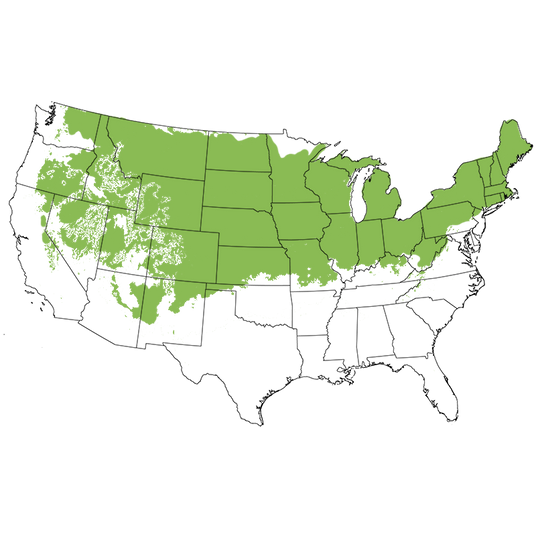
Growing Zones
Elegant, Soft-Needled Douglas Fir Tree
- Beautifully Soft Needles
- Outstanding Pyramidal Form
- Fast Growing
- Large Scale Tree
- Native Evergreen from Western North America
- Deer Seem to Leave Douglas Fir Alone
For a robust accent in your landscape, try the excellent evergreen tree Douglas Fir (Pseudotsuga menziesii). It features a very symmetrical, upright pyramidal shape and looks great in every season. It even smells wonderful!
You might see the name sometimes written as Douglas-Fir or Douglasfir, because it's actually not a Fir. This beautiful tree is actually a member of the genus Pseudotsuga, which means "False Hemlock".
Any way you want to call it, we bet you'll love running your hand over the soft, blue-green needles. They aren't stiff and pokey like other evergreens. Kids like to pet them, too.
This is also one of the fastest growing evergreen trees available. It will grow about 3 feet a year to quickly provide a wonderful focal point or privacy screen for you and your family.
It's lovely in its natural form, so no need to prune. Older trees can develop those romantic, pendulous lower branches that sway in the slightest breeze.
Create fun memories by decorating it for Christmas every year! Cute pine cones grow 3 - 4 inches long and can be used for fall and winter decorations, too.
Local birds love to nest in the shelter of a Douglas Fir. But deer seem to leave this tree alone.
Native Douglas Fir trees are found in the wild; from the slopes of the Rocky Mountains to the Pacific Northwest. The oldest specimen is nearly 1500 years old. As it ages, the fissured, reddish-brown bark brings a tremendous amount of visual interest.
It's a particularly hardy tree and grows in a variety of soils. For a fast-growing, hardy evergreen tree that is versatile and care free, you can't go wrong with a Douglas Fir. Order yours today!
How to Use Douglas Fir in the Landscape
This is a terrific specimen plant or focal point for larger landscapes. If you have the space, try an informal group of 3, 5 or 7 in an oversized lawn planting.
Imagine you are recreating the look of the Mountain West, and let your creativity run wild.
For Douglas Firs to touch and make a solid screen, plant them 12 to 15 feet apart. For the trees to stand alone as individual trees, give them at least 18 feet apart.
For the most natural look, try to vary the distances between them, and don't plant them in a straight line. Rather, stagger the trees off-center, keeping the design loose.
Keep your new trees in their nursery containers and play around with the spacing. Far easier to move potted plants around to make sure you love the design, before you plant your trees in your soil. It's a good idea to check from various vantage points.
Site this planting where you'll enjoy it from your deck. You want to be able to see it from inside your home. Leave room for a rustic fire pit, hammock or picnic table in the shade of your trees.
Douglas Fir has a big personality and can carry a "lot of look." Try mixing it with other evergreens, including smaller upright Junipers and Pine trees. Don't forget about the rounded evergreen shrubs, like Mugo Pine to soften the foreground.
They make a magnificent backdrop for smaller accent trees, like Eastern Redbud, Pink Flowering Dogwood or Japanese Maple. They stand up to exterior sculpture without stealing the show.
Partner with rugged Ornamental Grasses and the bright stems of Red Twigged Dogwood. Or, use a complementary color - like the chartreuse green of First Editions® Tiger Eyes® Sumac.
Another classic use for these trees is as windbreaks and in shelterbelts. Plant them in staggered, zig-zagging rows to create an interesting living fence to cut down on wind and blowing snow in big, open areas. Keep them tightly planted about 12 feet apart for the fastest screen.
It's best practice to mix other plants in these windbreaks, and we've got a huge variety of trees and large shrubs that will work together beautifully. Be sure to add Lilacs for fragrance and flowers.
Many like to use soft and natural looking Douglas Fir to screen out ugly views and buildings along an existing fence. No matter how you install your planting design, you'll easily create a beautiful backdrop for your property.
#ProPlantTips for Care
Plant Douglas Fir where it will receive at least 4 hours of sunlight a day. They love cooler climates.
They do demand a very well-drained soil, or they will not perform well for you. Moist, well-drained soils are best.
They won't tolerate standing water. If you see puddles that remain on your planting site, you'll need to improve the drainage. Bring in additional soil and mound it up 24 inches above the soil line. Plant directly in that mound.
Careful, regular watering is needed for the entire first season to keep your plants stress free. Once established, they can be very drought tolerant. After all, you will see them growing right out of the rocks in the Rocky Mountains.
It's usually best to allow the plants to grow naturally, but you can shorten up the new growth by simply breaking or snipping part of that new expanding growth, if needed. You could also prune back excessive long growth from the previous season in early spring, if necessary.
You'll love having your own living Christmas Tree in your landscape. Enjoy this magnificent native evergreen. Order today!

